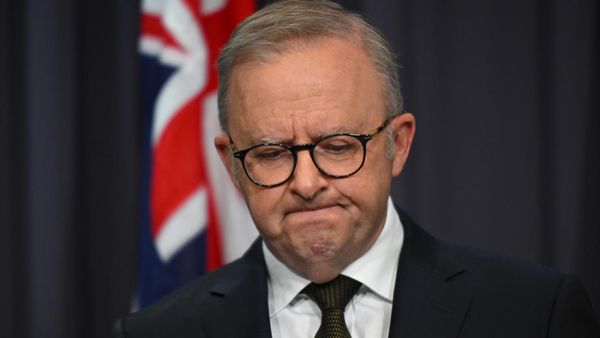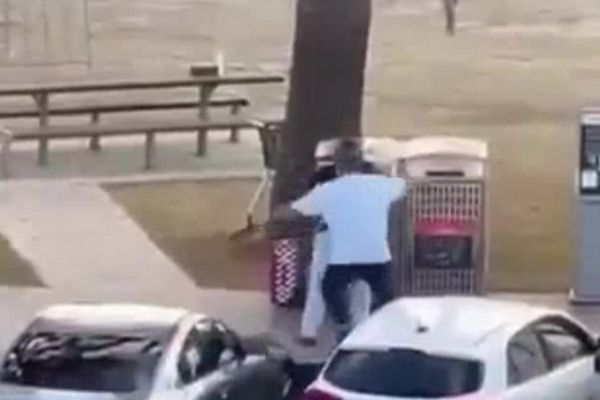
Let’s Be Blunt: No smoking in the plazas” is the message that has been placed around Times Square following newly liberalised cannabis laws that have turned New York, some say, into a pot-smoking free for all. The legislation has also set off an upstate cultivation boom that produced 300,000 pounds of weed, valued at three-quarters of a billion dollars, in its first harvest.
So far just a handful of state-licensed dispensaries have opened, a complement to hundreds of weed-selling vape stores, more traditional home delivery services and those calling out their wares in parks and street corners across the city.
With the aroma and sales of cannabis seemingly everywhere, the city’s mayor, Eric Adams, is committed to redoubling efforts to crack down on unlicensed distributors, raiding dozens of stores, confiscating product and issuing fines. In one instance, a converted school bus selling marijuana near Rockaway Beach ferry was seized.
There is big money at stake. As of March 2022, weed-legal states reported a combined total of $11.2bn in tax revenue from legal, adult-use cannabis sales. Nationally, the legal cannabis market could reach $66bn by 2025.
“We have to zero in on this cannabis stuff,” Adams said last week at City Hall in one of a series of speeches in which he has expressed concern that illegal stores are selling unregulated and untested cannabis products designed to entice children. “We can’t have people make a mockery of our system.”
That “system” is designed to promote social justice but critics say the legal market is weighed down with a bureaucracy of permits, licenses, taxes and regulations that, notwithstanding the possibility of arrest and seizure, scarcely troubles the long-standing illegal trade.

Under rules drawn up by Adams’s predecessor, Bill de Blasio, New York’s Office of Cannabis Management favours growers and dispensaries run by members of communities disproportionally affected by decades of prohibition, a century-long period that the American Civil Liberties Union describes as a “racist war”.
“Over the last 30 years, Black New Yorkers were 15 times more likely to be arrested for cannabis than white New Yorkers,” the management board says. “For Latinos, it was 8 times more likely.” Accordingly, it says, the majority of licenses announced to date were awarded to people of colour.
But New York has licensed far more farms than dispensaries, creating a glut of unsold product.
At Hudson Cannabis, Melany Dobson has 2,700lb of harvest bud stacked to the roof in storage containers awaiting certification from one of five state testing labs. At the market value of $2,200 a pound wholesale, her stash value is $6m.
But wholesale prices in New York are falling, as they are across the US where many growers have gone out of business, and the federal government in Washington is paralysed by political disagreements over full legalisation.
Dobson, 30, is an employee of Abby Rockefeller, who also runs the nearby Churchtown raw milk dairy, where milk cows have named stalls. Rockefeller, a descendant of the oil baron John D, has said her primary interest is in the natural regeneration of soil – and it turns out that hemp and cannabis are effective in that effort.
Hudson Cannabis is licensed to produce 43,000 sq ft of cannabis flower, 29,000 sq ft of which are grown outside. But the industry is new to New York and the cannabis seed is not yet optimised for the Hudson Valley climate.
“It doesn’t make sense for anyone to be claiming the best cannabis right now, because so many seed banks were wiped out during prohibition,” Dobson says, and points out that New York’s illegal growers ignored agronomic traits because drug deals were often done in a hurry. “We have some way to go to make seed that reflect the conditions,” she adds.
Moreover, under state-by-state legalisation moving weed from one to another is illegal. “The regulations are confounding,” says Scott Solomon of OSS Inc, a risk management company involved in providing secure transportation. “In New York, businesses have none of the resources of the big cannabis players.”

The quagmire of regulations gives the illegal market a competitive advantage. “There is a lot of frustration,” Solomon says. “It’s a grey market where cannabis is not necessarily legal but it’s decriminalised.”
With certification and distribution bottlenecks, and no expectation New York will allow a pick-your-own or roadside sales common to vineyards or fruit farms, some of Old Mud Creek’s weed mountain will likely be processed for its active ingredient or sold to edible-product producers.
Dobson, who grew up on a micro-green farm in Massachusetts and planned to study law before joining a five-greenhouse weed operation in Humboldt, says the business is a natural fit with the farm-to-table movement.
“I’d compare it to wine and coffee. The only way we can meet the needs of farmers is if we value where the cannabis comes from and its specific attributes,” Dobson says. “Until now, unless you go to Jamaica or Mexico, we really had no idea where it came from.”
That’s something illegal sellers would dispute. Branding, after all, is key to sales and pricing and they argue that native New York is no match for their product.
But the movement toward buying local comes with marketing advantages. Dobson argues that the indoor-grow industry has stigmatised itself by only mimicking the natural environment. “We’re in collaboration with the plant and in collaboration with nature,” she says. “Being a part of the farm-to-table movement is important to us so we’re focusing on premium, regeneratively grown flower.”
New York’s experiment with cannabis legalisation comes amid growing concern about mental health consequences. Two years ago, the US National Institute on Drug Abuse warned that smoking high-potency marijuana every day could increase the chances of developing psychosis by nearly five times.
The effort to tease the market to within regulatory control under the guise of legalisation is unlikely to be entirely smooth, but it’s far from the era of criminalisation and incarcerations. Now the drug is legal, but smoking it in public spaces, including parks and beaches, is not.
Smacked! in Greenwich Village, one of the city’s two new legal stores and the only one licensed to “justice-involved individuals”, or people with prior marijuana-related offences, was shut for two days last week. Buyers, presumably, went a block north to Washington Square Park where, as they have for decades, dealers were plying their trade in the open air.
Around the states
California
The third largest producer at 577 tonnes. State tax authorities say customers purchased $5.3bn of legal pot products in 2022, an 8% drop over a year earlier and the first decline since the sale of cannabis was legalised in 2018. The industry faces headwinds, including competition from a booming illegal market, licensing delays and a collapse in wholesale prices. Hirsh Jain, vice chair of the California Cannabis Chamber of Commerce, told the San Francisco Chronicle that the sales decline is “a warning signal” that “the state’s legal market is on the brink of collapse”.
Kansas
The Plains state is opposed to legalisation and maintains penalties for possession and trafficking. In 2015, 10 Kansas sheriffs sued neighbouring Colorado, alleging that the state’s legalisation of cannabis was placing an undue burden on its law enforcement. The US supreme court refused to hear the case. In December, Kansas was in the spotlight again after police ticketed a cancer patient for his use of marijuana to alleviate his symptoms.
Colorado
The production monster of the union at 623 tonnes. Last week, Denver licensed its first marijuana-licensed consumption bus offering transfers to the airport. Sales dropped 20% last year to $1.8bn and the industry is in the crosshairs of the gun ownership debate. Licensed medical marijuana patients are not permitted firearms under federal law. But a federal judge in Oklahoma has ruled that the ban is unconstitutional.
Oregon
Another giant at 614 tonnes, but last week the Oregon Liquor & Cannabis Commission said the recreational cannabis industry was in its “weakest” economic position since 2016. Fading demand and a record outdoor harvest in October 2021 (the average production cost of dried cannabis flower grown indoors was $472 a pound in 2020, compared to $214 outdoors) “set off a slide in prices that put the entirety of the supply chain under pressure,” it said.
• This article was amended on 28 February 2023 to correct the figure given for the value of Dobson’s stash, which is $6m, not $800,000. Also Dobson grew up in Massachusetts, not Maine.







